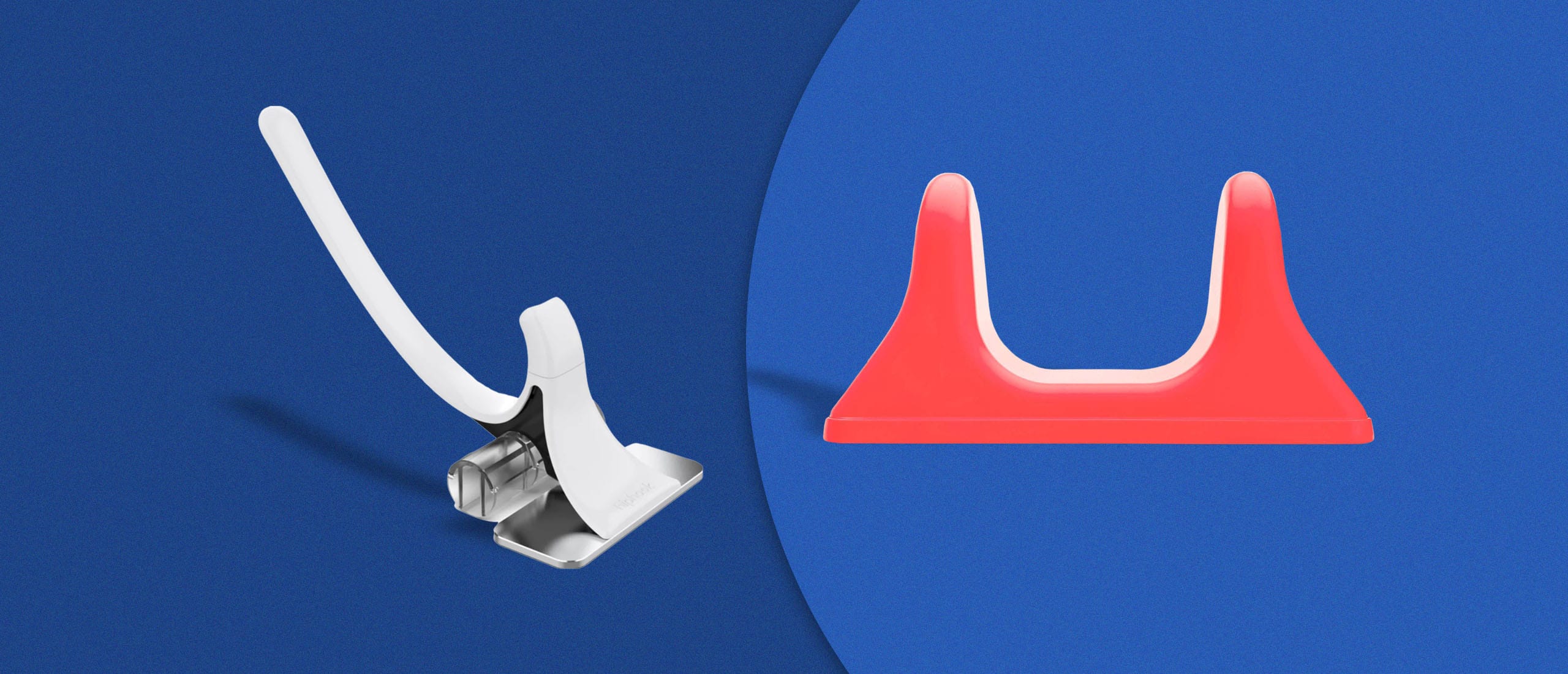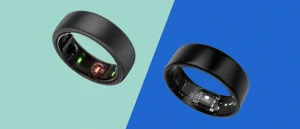Have Hip and Back Pain? Get Yourself a Psoas Stretcher
It is easy to stretch your quads. It is easy to stretch your hamstrings. You know what’s not easy? Stretching your psoas. One, because you don’t know what a psoa is. And two, because, even once you do know what the psoas are, getting them limbered up is no easy feat. In this guide we’ll compare the two most popular psoas stretchers you can buy: the Hip Hook ($200) and the Pso-Rite ($80).
We’ll also cover why you should know what the psoas are and the likelihood they are to blame for any number of your body’s ailments.

What Are the Psoas, and Why Do They Need Stretching?
What are the psoas?
Pictured in the image above, the psoas run from the middle point of your spinal column along to the pelvis. It is among the most significant muscles associated with your back and plays a role in everything from sitting on your backside to running marathons. If your psoas—or the iliopsoas, which is a combination of the psoas and the neighboring iliacus muscle—are tight you will experience anything from a lack of mobility to pain in your lower back, hips, knees, and even feet.
The muscle group is the primary flexor of the hip joint and it plays a role in your lower back support. Any kind of hip flexion, squat, or even just walking around the grocery features the psoas and larger iliopsoas muscles, so maybe pay it some attention.
Do the psoas need to be stretched?
Yes. Because of the unique role they play in virtually all movement and even stationary activities, their flexibility—or at least their ability to move with some degree of freedom—is extremely important for everyday and fitness health. It’s very common to have tight iliopsoas because it’s very difficult to target this region of your body in a normal stretching routine.
So the difficulty is the how not the why. Unlocking this muscle group can relieve pain in the back, hips, glutes, knees, feet, and more, as well as promote significantly greater lateral and vertical hip flexibility, which helps nearly every workout you can think of.
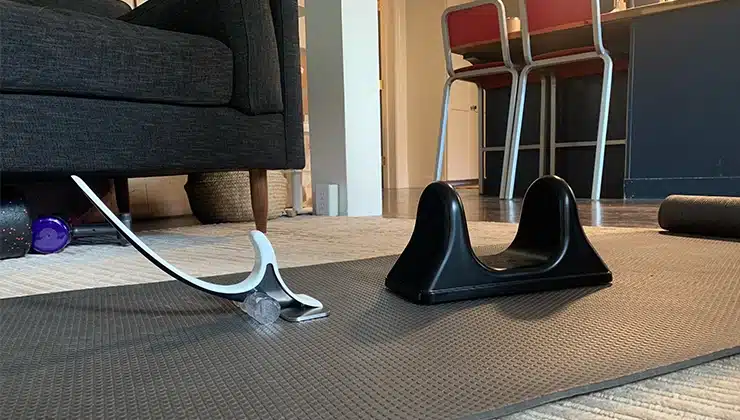
The Best Psoas Stretcher?: Hip Hook vs. Pso-Rite
Now that we know what the psoas and iliopsoas are, let’s break down the most popular tools used to release them at home. For a more in-depth analysis of each, visit our individual reviews—the Hip Hook review and the Pso-Rite review.
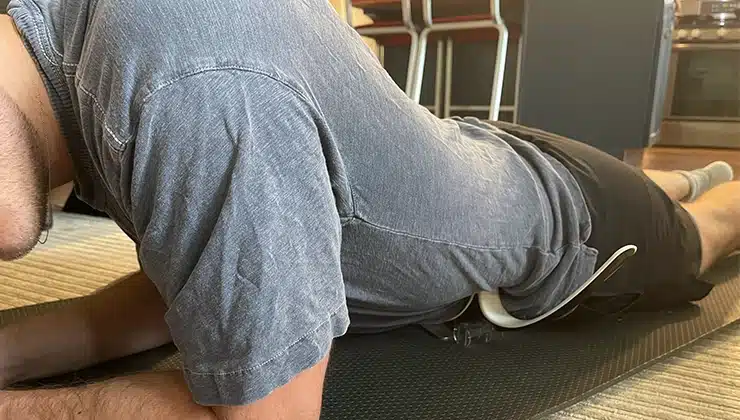
The Hip Hook
Designed by physical therapist Christine Koth, the Hip Hook is a small and fiendish-looking tool for releasing your psoas and iliacus muscles. After incorporating it into my routine for three months—I try to get 5-10 minutes on it at least 3 days a week—there are three things I like and two things I don’t like about it.
Like: Hyper-specific stretching
Due to the location of the muscles we’re trying to release, it’s necessary for these tools to be specific in their design, but the Hip Hook takes this a level beyond the Pso-Rite. The muscles being targeted are usually addressed by physical therapists, athletic trainers, or massage therapists. Keep that in mind when evaluating the cost of either of these products.
Like: Noticeable mobility boost
I’ve been inflexible my whole life, but I can get deeper into my barbell squat than I could before. I’d also grown accustomed to some discomfort in my pelvis when squatting, which has all but vanished since using the Hip Hook. For me, that means I feel more comfortable increasing the intensity of my leg days and I recover more quickly. I also no longer feel the tightness in my hips and lower back that used to plague my runs.
Like: Compact design
The Hip Hook is small and mostly discrete. It doesn’t take up too much space in a weekend bag, though it does kind of look like a sex toy (as pointed out by a TSA agent). Compact design is important beyond function—it makes sticking to a routine for longer, which is the whole game in fitness.
Don’t Like: It’s $199
Effective and compact? Yes. A good value? That’s hard to say. At face value, $199 for a uniquely shaped piece of plastic feels a bit insulting. It’s unfortunate to have to ask yourself how much pain relief and greater mobility are worth to you, but that’s what the Hip Hook’s price forces you to reckon with.
Don’t Like: Need or want?
This ties into the high price of the tool. You may very well have discomfort, pain, or mobility issues in all the regions the Hip Hook could fix. Could. Without consulting a medical professional it is difficult to say the Hip Hook will heal what ails you with any assurance. Used correctly, it will help, but the root causes of things like back and hip pain are varied and hard to identify for us laymen.
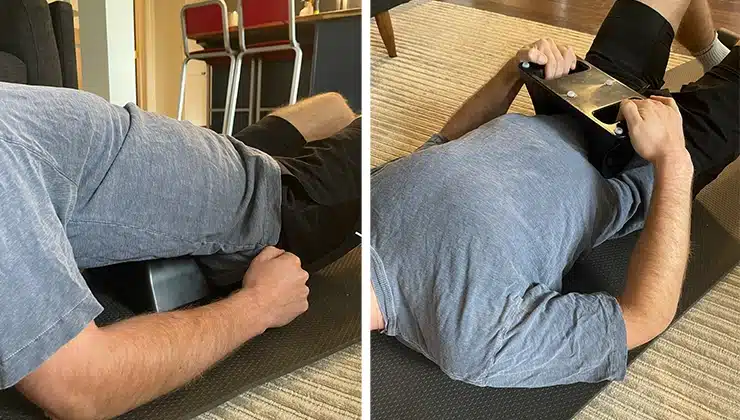
The Pso-Rite
Invented by former college football linebacker Mac Mollohan and released in 2017, the Pso-Rite is a U-shaped plastic gadget built to release the psoas. You can get it for $80 on the Pso-Rite website or Amazon.
Like: Genuine pain mitigation
I’ve had slight pains and discomfort in my knees while squatting, leg pressing, and lunging for a decade. Three months of using the Pso-Rite—I use three stretching variations with it—and I noticed these little twinges of pain less frequently. This is literally why you buy a product like this.
Like: Versatility
This is one of the features it has over the Hip Hook. There are plenty of stretches and muscles you can target with the Pso-Rite—I consistently use it for a glute, lower back, and core stretch (more detail in our review). Its shape and size mean you can get creative with it as well; sometimes I’ll stand on one leg and press my other ankle into the middle of it to stretch my heel and calf, for example.
Like: Price
The $80 price tag doesn’t feel great until you see a $199 total in your Hip Hook checkout cart. The reality is both of these things are mostly plastic with no easily discernible reason for being more than $50, but because they both are, the significantly more affordable Pso-Rite gets hails as a “budget” option.
Don’t Like: Slightly more challenging to use correctly
When you take the Pso-Rite to your psoas you do so in a number of different ways. You can warm up the region by pressing the tool onto your core area (pictured above), then you can slowly rotate your mid-section back and forth over the notches of the Pso-Rite. You can also perform a similar movement with the tool on your lower back. Either way, I found it more difficult to feel I had really pressured the muscles I was meant to than when using the Hip Hook, which is comparatively straightforward.
The Hip Hook provides a direct approach to targeting this hard-to-target muscle while using the Pso-Rite requires more experimenting. It feels like less of a sure thing, basically.
What’s the Best Psoas Release Tool?
If you know your psoas or iliopsoas are the root cause of whatever pain, stiffness, or discomfort you feel day-to-day, I recommend the Hip Hook. Yes, it is nearly $200, but its design is more specific to addressing the problem of stiff psoas than the Pso-Rite.
That said, if you’re experiencing more general lower back, hip, and knee issues but are unsure what the root cause is, buy the Pso-Rite. It’s a far more versatile product, and, having owned both for a few months, I find myself using it almost every day before gym sessions or if I’m a little tight before getting in bed.


